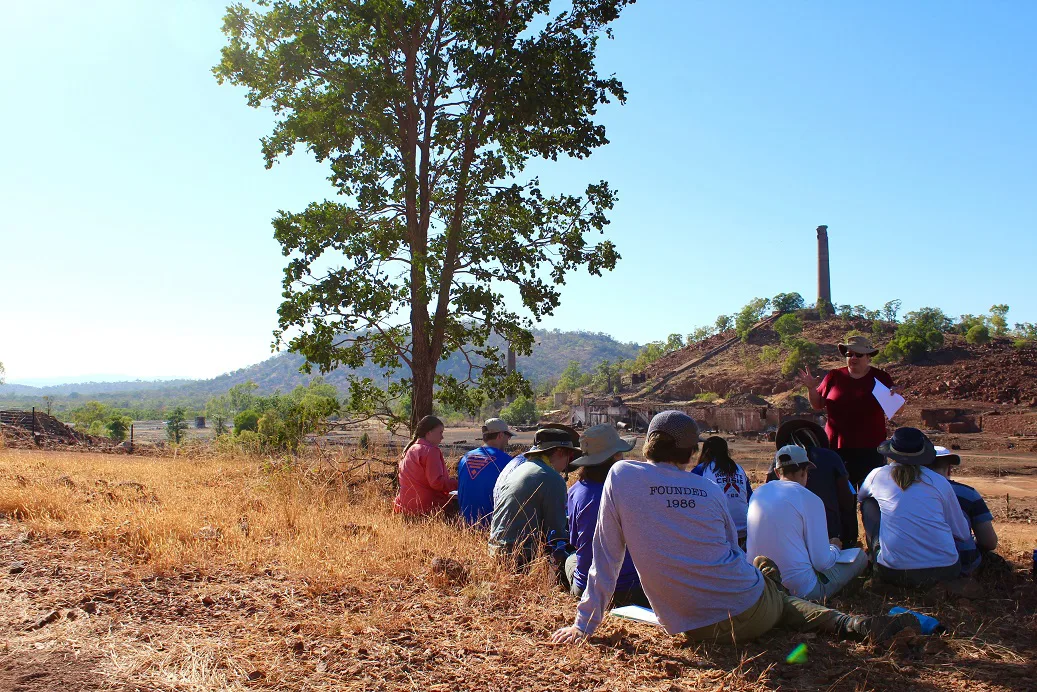Moving through Landscapes, Wildscapes, and Seascapes in Search of Knowledge
The last two weeks have been action packed at the SFS Centre for Rainforest Studies (CRS). In addition to our usual classroom and field lectures, we have had 3 field excursions. For the field excursions, students visited the outback Chillagoe, the Mandingalbay Yidinji community and the Great Barrier Reef.
Apart from the usual excitement by students, which comes with visiting new places and taking a break from the centre, there are real and enduring lessons to be learned from these trips. Students have the opportunity to experience Australian culture, explore the landscapes/wildscapes and seascapes, and are able to learn and appreciate the connections between these. We aim to facilitate them to gain an understanding of the local environmental issues. This is crucially important given that environmental education is most effective when it speaks to local issues, problems and priorities. Hence, students are more likely to benefit from environmental education if they are facilitated to see the link between personal as well as community well-being. This outcome is better achieved by visiting real places and interacting with real local people.
Chillagoe is an outback ghost town, located in an area which is characterized by limestone caves, ancient aboriginal art and mining heritage. It is a microcosm of how past economic activities, namely mining in fragile lands in Australia and elsewhere in the world, has led to high social and environmental costs despite the initial promise of wealth and jobs. Students visited the old smelter, went on a guided cave tour, explored the diversity of plants growing within the caves’ micro-climates, and learned about the geology & history of area. I dare say that camping overnight under a clear blue sky, illuminated by bright shining stars, made the students experience totally unforgettable.

The second excursion trip to the Mandingalbay Yidinji ‘country’ enabled students to interact with and learn from the Indigenous rangers who manage the community’s land and sea resources. Having had an introductory discussion on past marginalization of indigenous Australians, and the current initiatives geared towards involving them in the management of local resources, the visit helped students to obtained firsthand information on some of issues discussed. They had the opportunity to ask questions to broaden their understanding of the First People’s relationship with the land, and the role of the indigenous rangers in managing local resources.
The final excursion to the world famous Great Barrier Reef was both relaxing and thought provoking. The Great Barrier Reef is, without doubt, the largest living structure in the world, but it is currently experiencing a serious problem of coral bleaching. Students were taken on a tour of the reef, in a glass bottom Boat, to view the status of the corals and other marine life. The extent of bleaching was not only evident from the students’ own observations, but was also confirmed by the Boat’s long serving coxswain. A brainstorming session on the factors contributing to coral bleaching, and approaches to mitigate the same, helped students to see the complexity of managing such an enormous seascape. Furthermore, the students’ understanding of the cultural, economic and environmental interdependence between neighbouring landscapes was enhanced.
The topics covered during these excursions form the core of our curricula. Our hope is that students were able to gain a better understanding of the interplay between socio-economic and ecological issues in and around the Wet Topics region.
Related Posts


Alumni Reflections: Stories of the Return to Kenya
